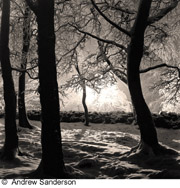
Duotones
Photographic print toning
In photography, toning is a photographic print toning process carried out on silver-based (black-and-white) photographic prints to change their color. Some toning processes can improve the chemical stability of the print and allow it to last longer. Other toning processes can make the print less stable.
Many early prints that exist today were toned with sepia toner.
Most toners work by replacing the metallic silver in the emulsion with a silver compound, such as silver sulfide (Ag2S) in the case of sepia toning. The compound may be more stable than metallic silver and may also have a different color or tone. Different toning processes give different colors to the final print. In some cases, the printer may choose to tone some parts of a print more than others.
Toner also can increase the tonality of a print. This increases the range of visible shades without reducing contrast. Selenium toning is especially strong in this regard.
Selenium toning

Selenium toning is the most popular of the archival toning processes, converting metallic silver to silver selenide. In a diluted toning solution, selenium toning gives a red-brown tone, while a strong solution gives a purple-brown tone.
Selenium toning may not produce prints quite as stable as sepia or gold toning. However, its appearance is much more subdued than sepia and it is cheaper than gold. Selenium toning also increases the tonal range available in the paper.
Different printers use somewhat different methods of selenium toning, but most often a fixed (and perhaps rinsed) print is placed in selenium toner solution and then rinsed, treated with hypo clearing agent, washed, and hardened.
Gold Toned
Gold toning used alone gives blue blacks, but used with sepia toners produces orange-red effects.
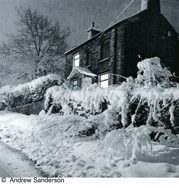
Sepia Toning
| Hex triplet | #704214 | |
|---|---|---|
| RGBa | (r, g, b) | (112, 66, 20) |
Sepia is a rich brown pigment derived from the ink sac of the common cuttlefish, and it is also the name of a dark brown-grey color.
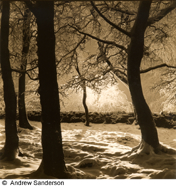
Sepia was commonly used as writing ink in classical times.
In the last quarter of the 18th century, Professor Jacob Seydelmann of Dresden developed a process to extract and produce a more concentrated form for use in watercolors and oil paints.
Sepia is also favored in photography; the color can be obtained with a gold toning bath. The reddishness we nostalgically associate with sepia is actually the result of fading over time. Consequently, sepia has become a very vaguely defined term.
The word sepia is Greek for "cuttlefish".
Sepia tone is a type of digital photo in which the picture appears similar to a traditional black-and-white print toned with sepia. It appears in shades of brown, as opposed to grayscale.
Sepia can be produced in many digital cameras and camcorders, or it can be produced in the digital darkroom.
Many photographers prefer to use software because these offer more control over how much tint to apply the image, and exactly what hue. There is no single color known as "sepia" - the term covers a range of yellow and brown mixtures.
More sophisticated software tends to implement sepia tones using the duotone feature. Simpler photo-editing software usually has an option to sepia tone an image in one step.
Adobe recommends setting Hue = 27 and Saturation = 21 and checking the Colorize box in the Hue/Saturation filter in Photoshop
Create a sepia PSD template with a hue/saturation adjustment layer. Hue = 27
and Saturation = 21
Because sepia photographs are so heavily associated with the 1880s, almost any photo will seem nostalgic after toning.
Sepia-toned images are heavily associated with the 1800s and "that old-time feel." Many photographs of the American Old West were recorded in sepia tones,
particularly Edward Weston's photos of Carmel.
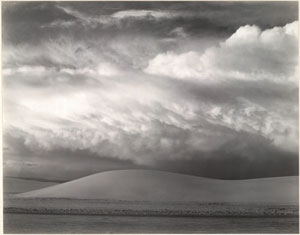
The Kansas scenes in The Wizard of Oz were in sepia tone, until Technicolor takes over in the land of Oz.
Wings of Desire movie by Wim Wenders is filmed in sepia mostly, to depict that the movie protagonists, invisible angels, lack the usual human senses; when the angels are not present, the movie is shown in full color.
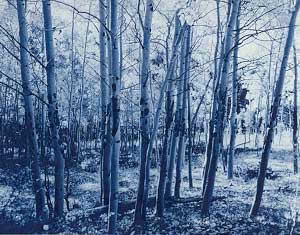
Like sepia, cyanotypes hail from an old and long-forgotten photographic process ( from the glass-plate era ) that produced bluish-cyan prints.
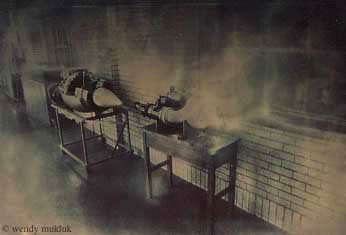 blueprint on grayish paper, from
streaky fogged negative; infrared original photo
blueprint on grayish paper, from
streaky fogged negative; infrared original photo
Vintage Bondage Cyanotypes from 19th c. France
Charles FranÁois Jeandel (1859 - 1942) was a honorable member of the Archeological Society of Charente. With his wife Madeleine (left picture), he seemed to have a quiet life in the countryside. Or not (right picture).
Charles and Madeleine didnít have any children. Itís a miracle that this album didnít get lost or finish in the hands of a private connaisseur... Today, the collection belongs to the Musťe díOrsay.
The blue cyanotyped pictures give a touch of morbid mystery to these images.
Today's cyanotypes, like the one pictured above, also fall under the umbrella of Photoshop Duotones. These are made with black, blue, and cyan ink; sometimes the smallest amount of green is added.
The Lysonic Small Gamut inkset uses the "Small-Gamut" (patent pending)
approach that provides the ability to precisely control the colouration, or hue,
to monochrome images. This inkset has the desirable effect of avoiding grayscale
non-linearity (reddish highlights with greenish midtones and off-colour shadows
etc) that full colour inksets exhibit.
Small Gamut Toneable Inkset - for Black and White Inkjet Printing
Using this inkset the photographer can tone a print warmer or colder and produce your own definition of a neutral print. This flexibility, is a prime reason why the Small Gamut inks are our most popular inkset for black and white inkjet printing.
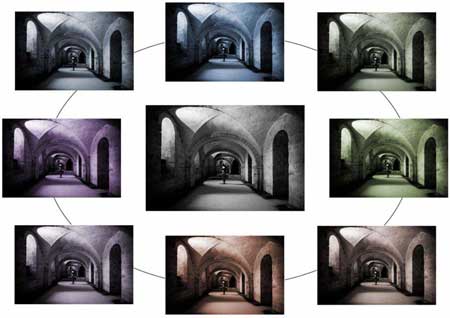
Small Gamut effects include: selenium-toned silver; black and warm Gray duotone; warm-tone; cool-tone; absolute neutrality; split toned; or even localized color effects!
This inkset has a certified Longevity of 60 - 100 years (depending on the amount of toning and paper used). Small Gamut ink is compatible with the full range of Lyson Media.
Don Hong-Oai
Photographer whose unique and poetic images of the Chinese landscape were created by blending photo negatives, who began showing his photographs at street fairs after moving to San Francisco's Chinatown and went on to see his work exhibited throughout the world and sought after by private, corporate and museum collectors, died on June 8, 2004 in San Francisco, having undergone heart surgery in December. He was 74 years old.